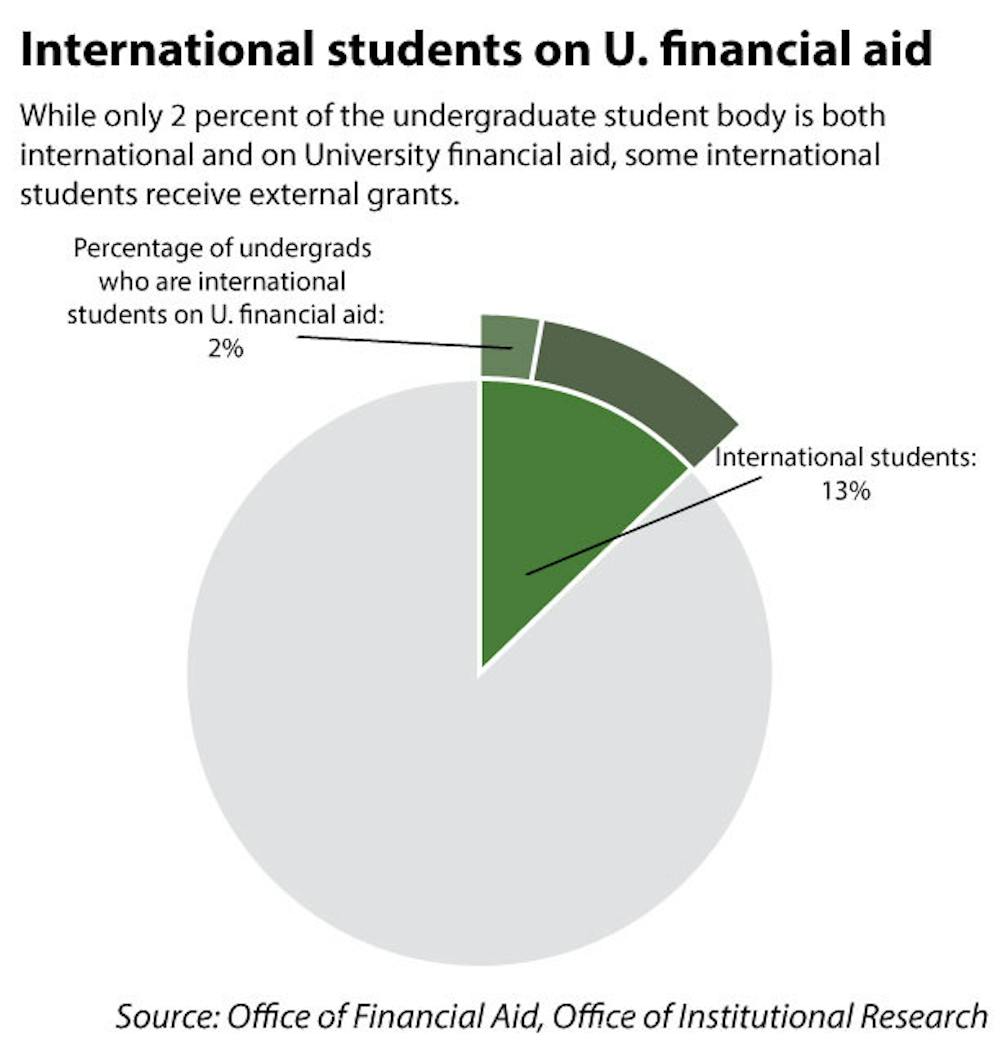This fall, 33 out of 1,691 first-years stepped on campus with a relatively uncommon label: international students on University financial aid.
About 15 percent of the international students who matriculated with the Class of 2020 received University aid, said Jim Tilton, dean of financial aid. The first-years join 155 sophomore, junior or senior students who share the same label and make up 2 percent of the undergraduate population, Tilton added.
Though the University has added various resources in the past couple years to help this small slice of students, they still face a unique set of challenges, such as navigating a need-aware admission process and acclimating to a stereotype holding that international students are too wealthy to need aid.
Domestic students are reviewed through a need-blind policy, which means each student’s ability to pay “will not be a factor in the admission decision,” according to the undergraduate admission website. By contrast, financial need may be considered in admission decisions for international, transfer and resumed undergraduate education applicants.
President Christina Paxson’s P’19 strategic plan, Building on Distinction, released in 2013, urged the University to “work toward Brown’s long-standing goal of becoming fully need-blind for all students.”
The Financial Aid Office sets the “availability and allocation” of aid available for international students, said Logan Powell, dean of admission. “We try our best to maximize the perspectives that can be represented on campus with the financial aid dollars that are available,” he added.
Over the last eight years, the amount of aid available has steadily increased because of an initiative started by former President Ruth Simmons to increase financial aid awards for students of all backgrounds, Tilton said.
In fall 2008, $3.8 million in aid were available to international undergraduate students. The aid has increased to a total of $9.9 million this fall, Tilton said.
Regardless of a domestic or international background, admitted students will have 100 percent of their demonstrated financial need met, Tilton said. Additionally, because it is expensive to fly internationally, international students are eligible to receive a travel allowance of up to $1,500 in their aid packages starting this fall, Tilton said.
“I wasn’t worried at all” about the difference in the admission policies, said Cameron McKie ’19, an international student who has received financial aid through the University. “I wanted to come here so badly that it really didn’t matter to me,” he added.
Yet many people do not apply for aid even if they cannot afford tuition because they think their admission will be impacted, said Kudrat Wadhwa ’19, an international student receiving financial aid through the University.
The choice not to apply for aid when applying for admission to Brown will stick with students throughout their time here. International students who do not initially apply for aid during the application process cannot be considered for aid at any point, “even if a student’s financial circumstances change or a sponsor discontinues providing support,” according to the undergraduate admission website.
International students who initially applied for aid can have their award packages adjusted each year they submit a financial aid application to accommodate life changes, Tilton said.
Because domestic admission is need-blind and international admission takes finances into consideration, there is a widely held assumption on campus that international students are wealthy.
On campus, “there’s a feeling that all international (students) are rich,” McKie said. “But that’s not completely true.”
Shontay Delalue, assistant dean and director of international student and visitor experiences, said that there is a “myth” of universal wealth within the international community.
The seemingly small percentage — 15 percent — of international students on University aid could perpetuate this myth. But the percentage does not accurately portray the financial situations of the other 85 percent of international students not on University aid, Delalue said.
One factor skewing this perception is that some students not on University aid depend on aid from other sources. Students with outside funding are not counted among the 15 percent of international students on financial aid.
Outside aid may come from students’ home-country governments, donors associated with schools they have previously attended or other sources. For example, 90 percent of United World College alums are a part of the Davis Scholars Program, which allows UWC students to receive up to $20,000 to fund their college educations based on demonstrated need. UWC students alone could account for no small number of students on non-University aid, as the University has the “second largest number of international students who have attended a United World College high school among all U.S. colleges,” The Herald previously reported.





